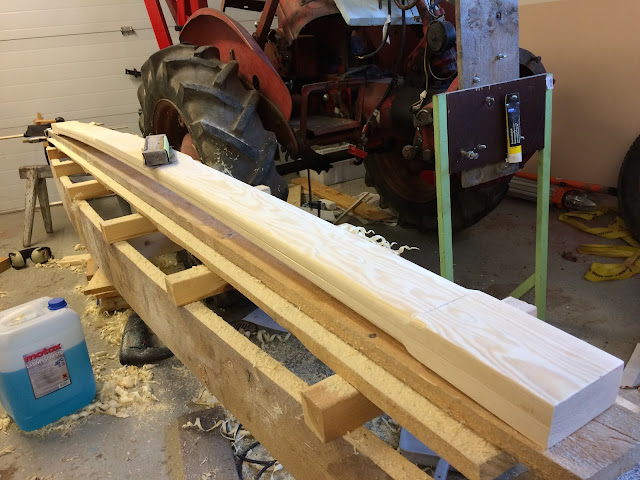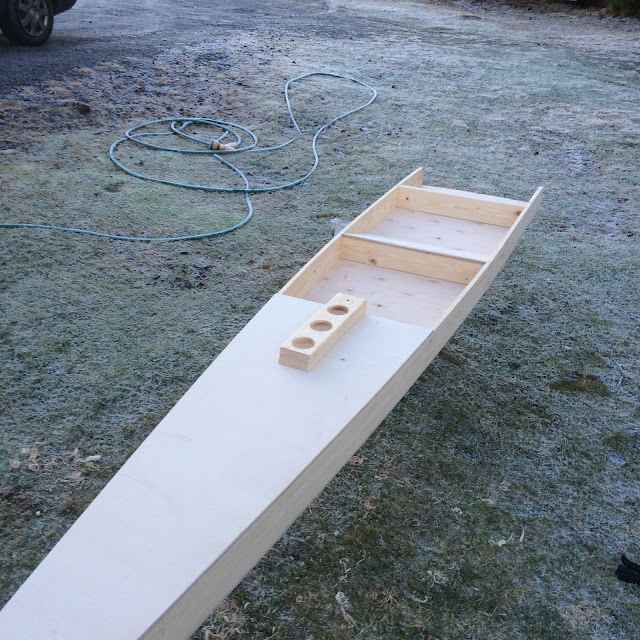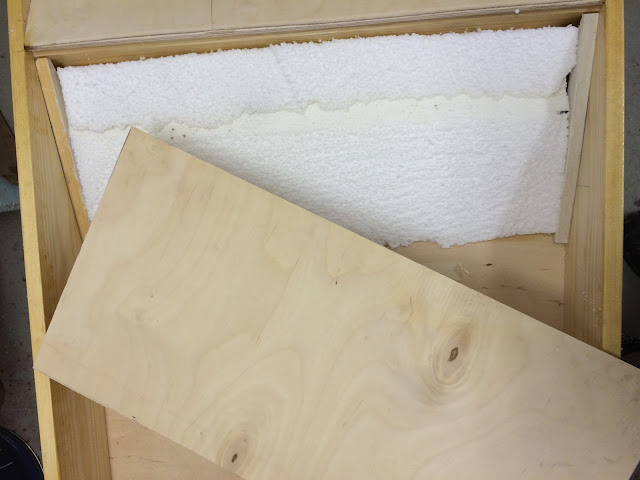As the name suggests I guess it should be able to take shocks when sailing on uneven ice. The following question is how stiff should the springboard be and how do you measure the stiffness? No idea at this point! The DN ice boat does not have a springboard it uses a spring between hull and front runner chock so I guess no help can be found from DN forums.
Another thing I'm wondering about is caster angle. Is it desirable to have a caster angle on the front runner steering shaft? And if so what should the angle be? I think applying a caster angle could make the steering more "user friendly". The Ice boats I have sailed tend to have quite aggressive steering. I plan to steer my boat with feet only, no tiller.
Third issue is the length of the springboard. How does the length of the springboard affect the handling of the boat? The longer the springboard is the easier it should be to tip the boat over.
It's been a couple of days since I originally wrote the questions above and since then I have had some time to seek information and give the issues some thought. I came up with the following conclusions.
Bernd Stymer has described building a spring board of two 12mm planks glued together so that's what I'm going to do too! What ever stiffness I end up with after gluing the planks together is what I tend to use!
I have been seeking the internet for information about caster angle for iceboats. I only found one article about caster angle or tilted pivot angle as it was called. The article mentioned a maximum value of four (4) degrees tilted pivot angle. The reason for the maximum value was a fear of front runner body hitting the front runner chock. I don't expect this to be a problem with the front runner chock I plan to build so I decided to aim for five (5) degrees caster angle! Why five degrees? Well I had the calculations ready from when making the rear runner plank and it was close to four degrees mentioned in the article...As good as any other guess!
The length of the plank I measured from the drawing in the building instructions!
Now that I have a plan it's time to start building the springboard. I had originally bought a 120 X 15 mm plank to use for building the springboard. Since my plan is now to use 12 mm plank I first had to get some help from a friend who owns a thickness planer to get the plank thickness corrected.
Preparing to glue the boards together.
The plank is glued up side down. In the right side of the picture you can see that I have tried to prepare the five degrees caster angle already at this stage. In this way I should be able to drill the hole for the steering shaft in a straight angle towards the springboard.
Drilling the hole for the steering shaft in a straight angle towards the reinforcement piece. Once the reinforcement piece has been glued in place I will drill the last bit true the spring board by hand.
Glue clamps removed. The plank bounced back quite a lot this time witch was expected since bending radius was small causing big tension when forcing the plank down in the gluing phase.
Trying to determine what the caster angle actually landed on.
Result about four (4) degrees!
Favorite tool used for making the sides of the spring board round.
The result.
Preparing to glue the reinforcement piece.
A lot of glue clamps for a small piece of wood!
Glue clamps removed and drilling the hole true the springboard. It would have been smarter to drill the entire hole in one go when the springboard was ready!
This piece under the springboard should not be needed but because of my experiment with the caster angle the board is slightly curved were the front runner chock will touch the spring board. I'm worried this might cause problems when steering! So I glue this additional piece in hope that the front runner chock will be able to turn freely.
Once the glue has dried the springboard is ready!














 .
.

































